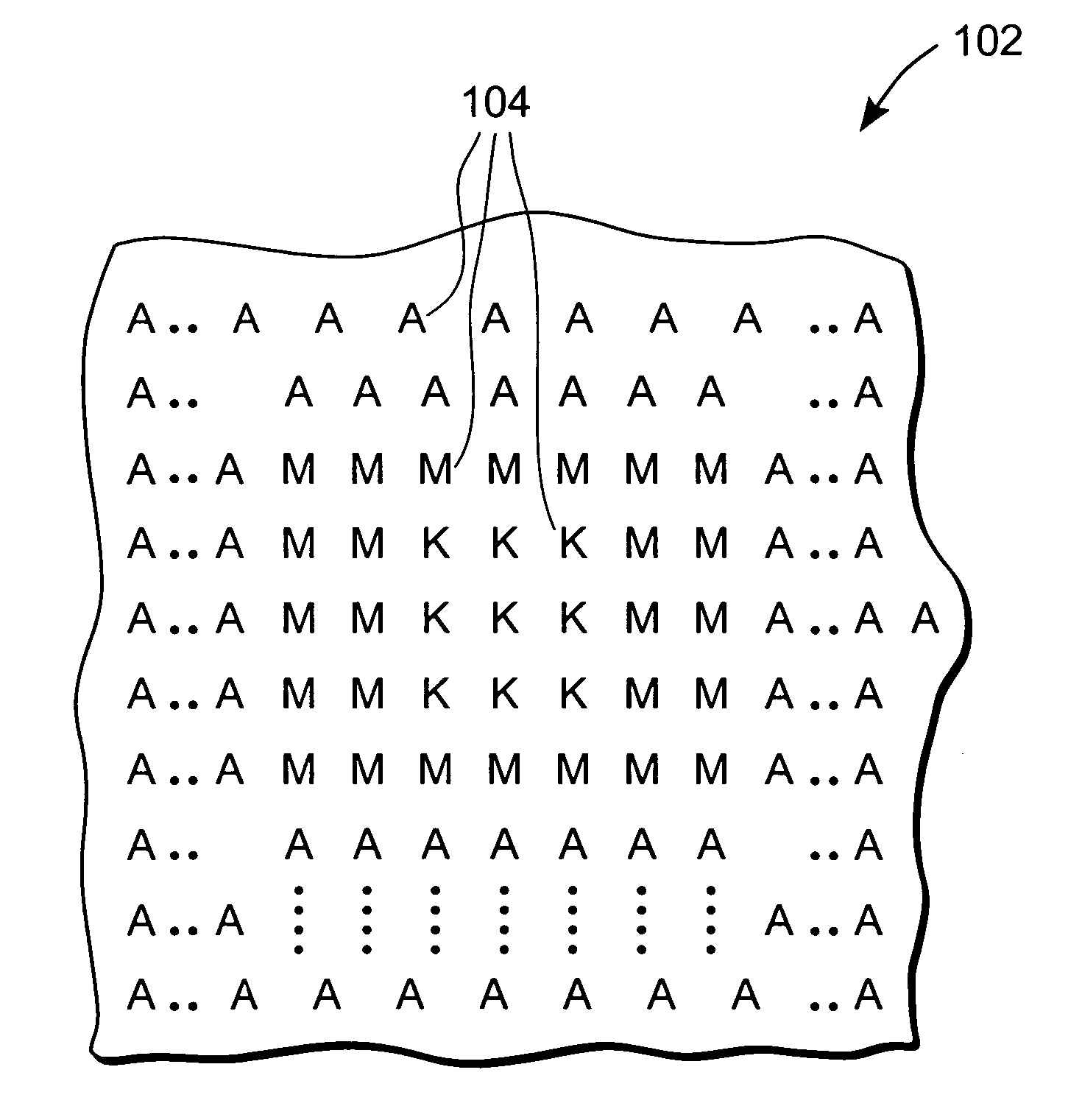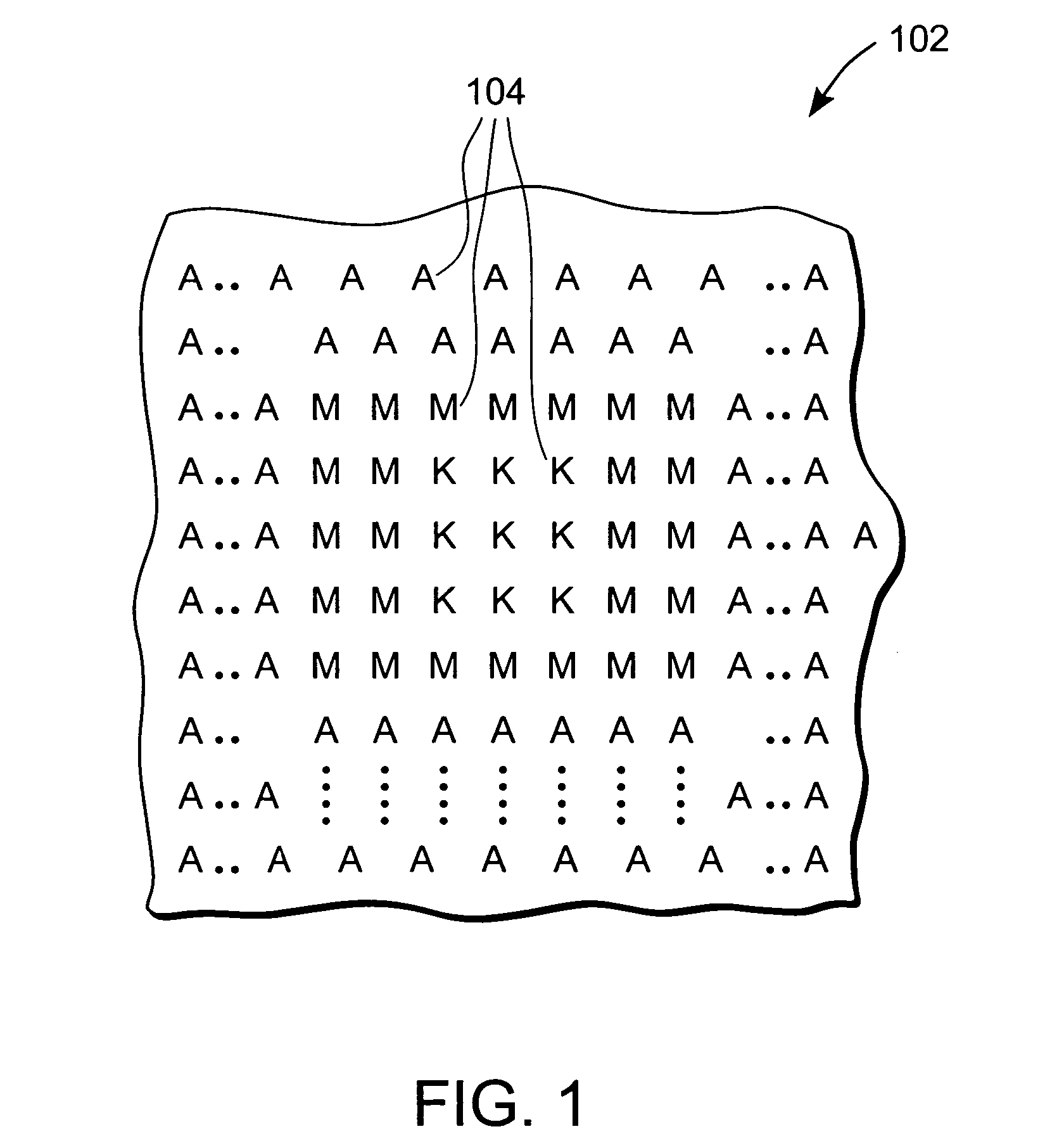Non-uniform power semiconductor and method for making non-uniform power semiconductor
a technology of non-uniform power semiconductor and power semiconductor, which is applied in the direction of semiconductors, electrical appliances, transistors, etc., can solve the problems of thermal runaway, further temperature disparity, and limit the performance of conventional power devices, so as to increase the surface temperature uniformity during operation, increase the speed, and increase the effect of soa
- Summary
- Abstract
- Description
- Claims
- Application Information
AI Technical Summary
Benefits of technology
Problems solved by technology
Method used
Image
Examples
Embodiment Construction
[0026]For purposes of discussion, to distinguish the A cells which are the workhorses of the power device and the B and C cells, the A cells are referred to as the active cells, while the B and C cells are collectively referred to as the peripheral cells. Similarly, the active area 602 (also “active device area”), shown in FIGS. 6A and 6B for example, is distinguished from the other regions (collectively referred to as ancillary regions) such as the guard ring region 604 which typically contains no cells and termination areas 642L, 642R which comprise termination cells. The active area is that area of the device which provides the transistor action, whereas the ancillary regions include structures such as gate vias for distributing the gate current over the area of polysilicon and the guard ring region used around the edge of the die to prevent peripheral voltage breakdown.
[0027]Referring to FIG. 1, the invention provides an active area of a power device in which the constituent act...
PUM
 Login to View More
Login to View More Abstract
Description
Claims
Application Information
 Login to View More
Login to View More - R&D
- Intellectual Property
- Life Sciences
- Materials
- Tech Scout
- Unparalleled Data Quality
- Higher Quality Content
- 60% Fewer Hallucinations
Browse by: Latest US Patents, China's latest patents, Technical Efficacy Thesaurus, Application Domain, Technology Topic, Popular Technical Reports.
© 2025 PatSnap. All rights reserved.Legal|Privacy policy|Modern Slavery Act Transparency Statement|Sitemap|About US| Contact US: help@patsnap.com



